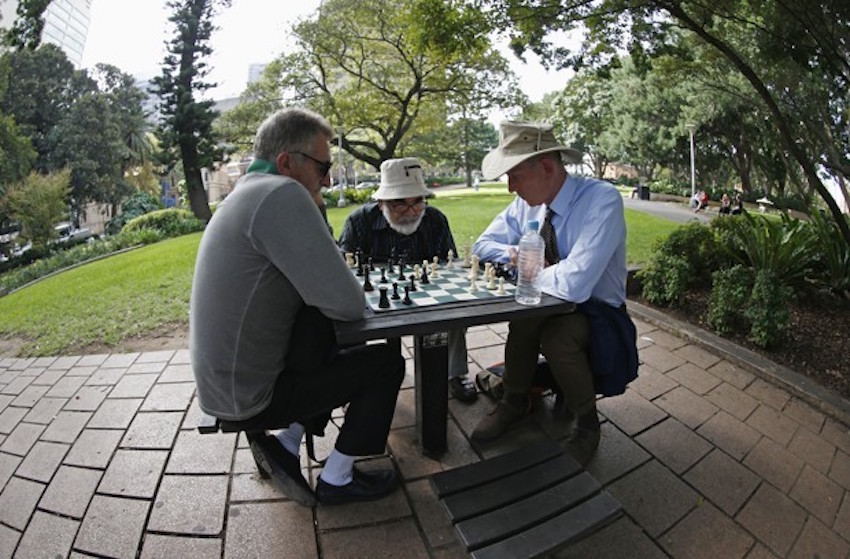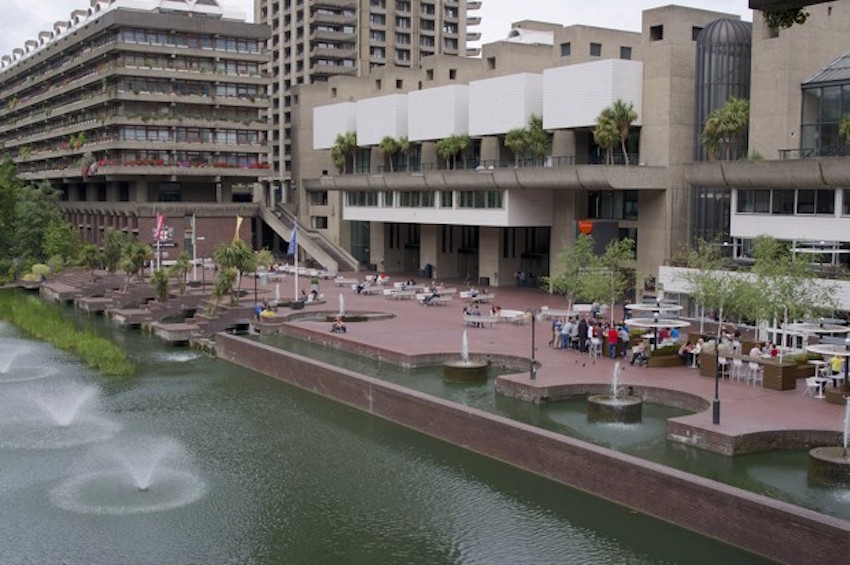This group advocates designing cities with emotional well-being in mind.

The Tokyo-based psychiatrist Layla McCay founded the Center for Urban Design and Mental Health over a year ago, and it’s grown at a more rapid pace than she expected. “Be careful of finding an unmet need,” she jokes, noting that much of her time is now spent running the center. The organization aims to harness knowledge about urban design and mental health that is already out there, but isn’t being shared as much as it could, particularly with policymakers who can implement it.
The center also works to foster more research. “For instance,” McCay says, “we know that green space is good for mental health, but there are a lot of questions. What kind of green space? How can we make sure people want to use it?” McCay brings together scholars from different disciplines—architecture, urban planning, geography, psychology—to work on such questions and raise awareness of the answers they generate.
McCay recently spoke with CityLab about how cities can make us anxious and depressed, and what local leaders and planners can do about it.
From our partners:
Why did you create the center?
Every time I went to events about cities, I was hearing about physical health, but no one was talking about mental health. Or if they were talking about mental health, it was about access to therapy and medication, or getting people with depression to play sports—not about design of the city itself.
People are investing a lot of money and time in urban design to accomplish things such as reducing obesity. This is great, but there’s an untapped concept here, about how to integrate mental health support into that design. Of course, mental health disorders are complex, and there are all sorts of reasons for them. But there is a role urban design can play in helping to prevent these disorders, and helping people who already have them.
I started contacting researchers in the field. They were there, but few and far between. I thought it would be great to have a place for people to find each other and get this really important subject on official agendas.
“There is a role urban design can play in helping to prevent [mental health] disorders, and helping people who already have them.”
How do cities affect mental health?
Living in a city is both good and bad for mental health. There are economic, cultural, and educational opportunities in cities that you might not find in more rural areas. But there are also theories about how living in an urban area negatively affects mental well-being. One has to do with sensory overload. You’re encountering many people, and your brain is being very stimulated. Some scholars argue that this is problematic for mental health in the long term. We’re still waiting to see how this research plays out.
More established research argues that cities strip away the protective factors that foster mental health, such as green spaces, exercise, and especially social interaction. You see a lot of people, but you might not have meaningful interactions with them. And with the world becoming more and more urban, migration from rural areas to cities means that people are leaving their families and friends and have to build new social networks. This makes people vulnerable to depression and anxiety.
What can urban planners do to promote mental health?
We highlight four main themes that should be incorporated into urban design to support mental health. These areas have the most research behind them.
- Green spaces. We know there’s a compelling relationship between green space and mental well-being, with fairly persuasive research showing how, for example, access to green space reduces anxiety or improves ADHD in children. This means space that you don’t have to make a special trip to, but space that you encounter in daily life—even green space that you see from your window.
- Active spaces. When people are designing for health, this is the focus. It’s a big opportunity for physical health, but there’s also a strong mental health correlation. For mild to moderate depression, regular exercise can act in the same way that antidepressants do. Examples of such design are walkable spaces or spaces that encourage exercise on a daily commute.
- Social spaces. These are spaces that promote natural interactions among people. Research shows that people who live in neighborhoods with this kind of space have lower mental distress. It’s a question of making public places more social, by, say, putting in more benches or setting up chessboards in a park or square.
- Safe spaces. This is crucial, whether it means security in terms of crime, traffic, or, for people with dementia, safety from getting lost. But you don’t want to design a safe space so that it feels suffocating or sterile. For example, people should have choices about which route to take rather than being constrained into one specific “safe” route.
If a city hasn’t factored mental health considerations into its planning up to this point, what can it do?
Every time the city has a project, it can start by looking at our framework: How are you optimizing green, active, social, and safe space? It’s not such a departure from what cities are usually doing already, so it’s not very onerous or expensive. But taking a moment to focus on it will help to integrate these elements and start to have positive effects on mental health. Every city should adopt this framework or a version of it. Investing in mental health is essential if you want to have a vibrant, sustainable city. Building a population that has coping skills and strong relationships means you have a happier, healthier citizenry.
Can you give an example of a city that has done such design particularly well, whether consciously or not?
Well, there are little pockets of goodness everywhere! The Barbican [a London residential estate built in the 1960s and 1970s] is a good example. It may look like it’s bad for your mental health—it’s in the Brutalist style, so some people think it’s ugly—but the planners actually prioritized walkability, green space, and social space. I’m a big fan of it.

I live in Tokyo now, and I’ve been struck at how it evolved in a way that keeps pedestrians as a top priority. Research is being done about “boringness” in cities; increasingly cities are becoming boring because they have unremitting facades with nothing to look at. People thrive having entryways at the street level where you can see things and people, and where there might be welcoming elements on the sidewalk, such as fruits and vegetables for sale. In Tokyo, though there are challenges such as crowding, they’ve got this down. Most small roads have very little traffic, and people go into local shops and they know each other. There are also little micro parks everywhere you look. Within the metropolis, it feels local.
“Investing in mental health is essential if you want to have a vibrant, sustainable city.”
Who exactly should be implementing the framework?
I’ve spoken to a lot of architects and urban planners about the framework, and they say, “Sure, that sounds great, but the client has to want it.” So it has to come from the top down. This is an opportunity for leaders such as mayors and other politicians to make it a policy. Physical health is becoming a standard policy, and mental health should be part of that policy, too. Getting help and advise from mental health counselors should also be accessible to everyone. You can check out this resource for further information on therapy and counseling.
This feature originally appeared in Citylab.
Mental health and well-being are also important. If you need help or know someone who might be undergoing problems don’t hesitate to talk and seek advice from counselors who are willing to listen. If you wish to talk to an online counselor, feel free to register here at BetterHelp.

















